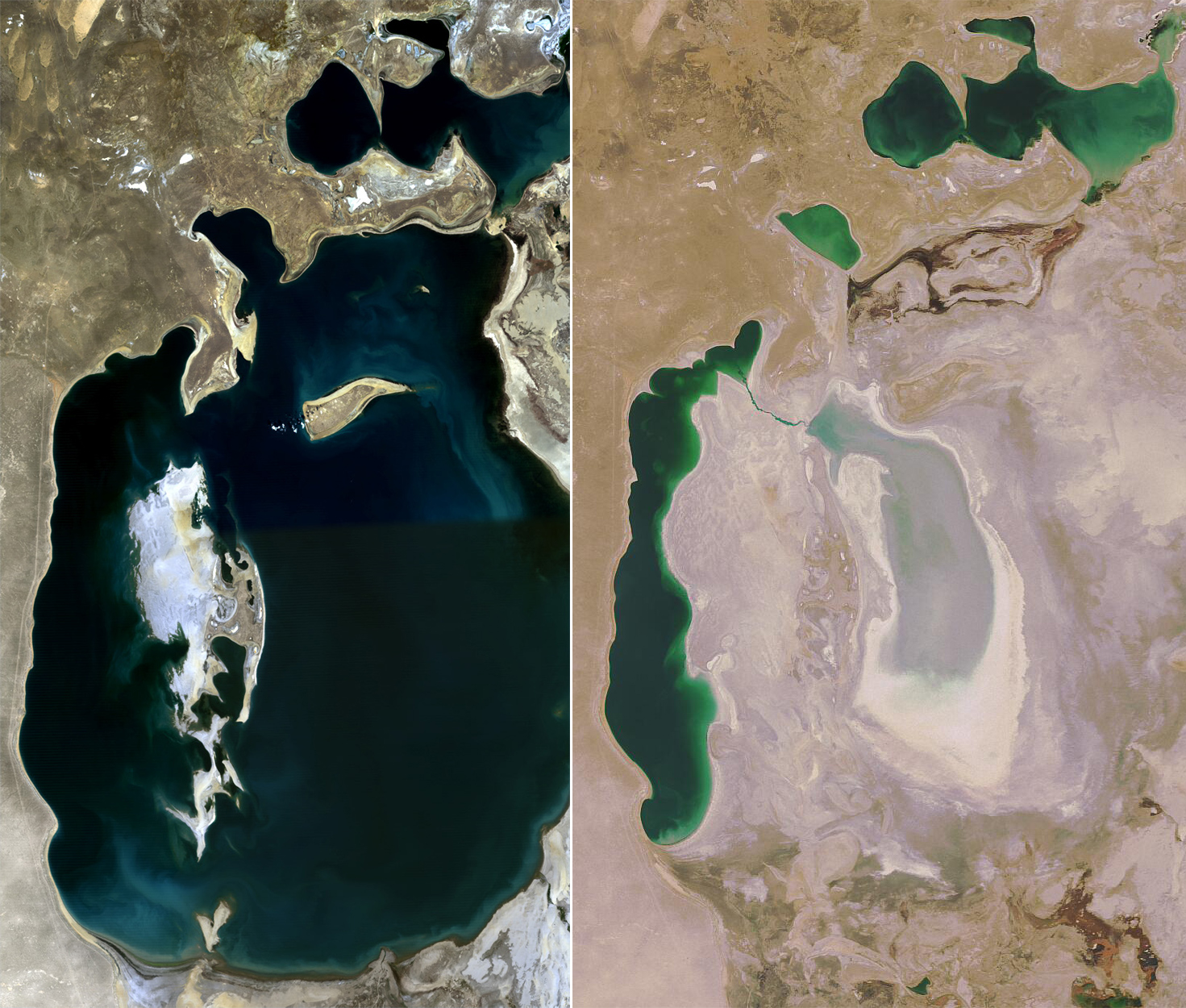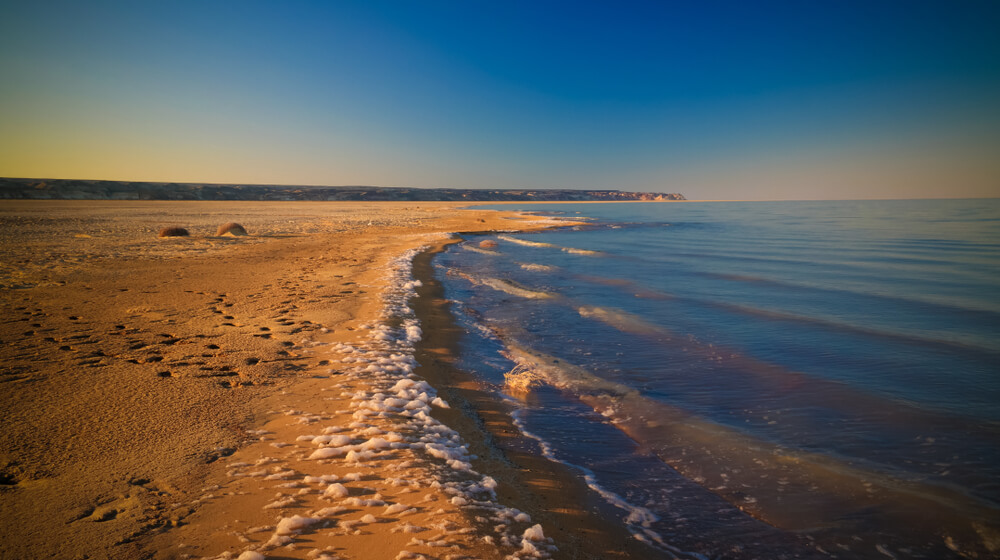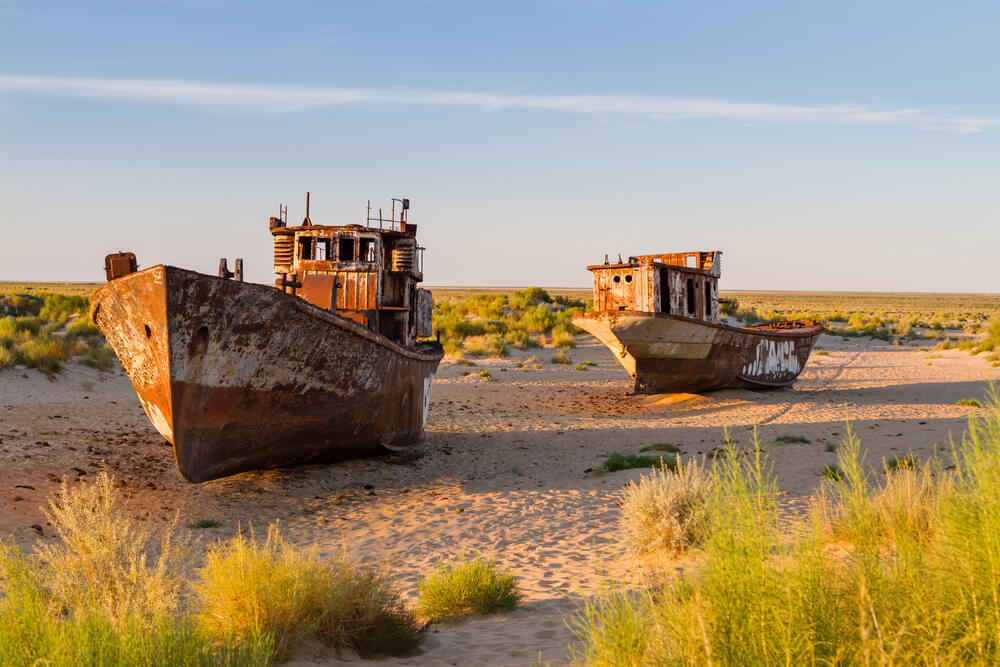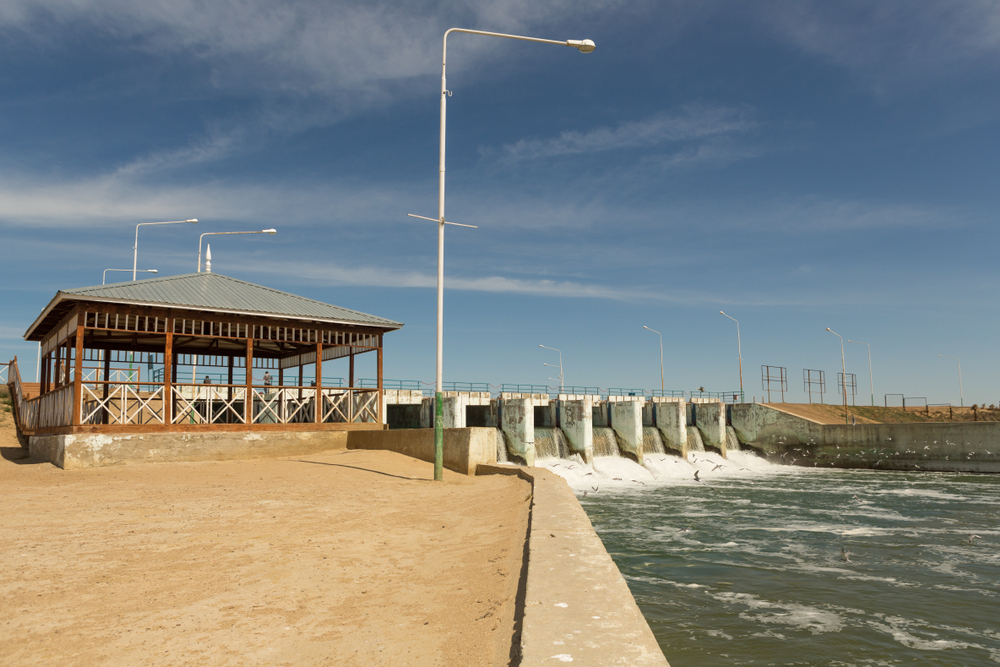Blog
Cotton irrigation and extreme droughts: how the Aral Sea turned into desert
Formerly the fourth largest freshwater lake in the world used to have an area of 67,000km2. The area shrunk to one fourth of its original area.

The Amu Darya and Syr Darya rivers, the primary inflows to the Aral Sea, amount only to 10% of the volume of incoming water compared to the 1950s, the time when the drastic change of the lake began.

The Aral Sea in 1989 and 2008. Retrieved from: NASA, Wikimedia.org
The former Soviet Union started many industrial projects for which they needed the water from the Aral Sea. Cotton production significantly contributed to the evaporation of the lake as both rivers were diverted to irrigate the Uzbek cotton plantations.
These activities caused that river shrunk from 67,000 to only 17% of its original area (some experts saying only to 10%). 44,000km2 of the area turned into desert, contributing to further spread of desert areas and climate change.
These changes resulted in frequent dust storms in the area, causing respiratory problems and endangering crops and the very important cattle breeding.

Evaporated economy
The young Madi Zhasekenov spent most of the summer holidays on the shores of the Aral Sea. He joined a group of local fishermen in the port near his home in Aralsk.
Few years after, the water levels of the Aral Sea dropped and the salinity rose so rapidly that the freshwater fish disappeared. Zhasekenov realized the urgency of this issue when he needed to buy the fish at the market instead of catching it.
Moynaq, a fishing hub in Uzbekistan that once employed more than 30,000 people, experienced a similar fate. Today, the seabed has completely dried out, leaving only sandy salt deposits and rusting husks of abandoned fishing boats.

Wrecked fishing boats near Moynaq
“As the sea disappeared, the people staying there became unemployed. The older generation officially lost their hope for the future,“ says Marat Allakuatov.
As a result of the evaporated economy, the local residents were forced to find a new job or to move out, just as Allakuatov did. He started to work in a hotel 200 kilometres from Moynaq in Nukus.
Back from the dead
In a few decades, the Aral Sea has been so devastated that thy only thing left were the desert areas, extreme droughts, and lost jobs. There are, however, a few initiatives to resurrect the Aral Sea.
In 2005, the Kazakh government, supported by the World Bank, constructed a 12km-long Kokaral dam that divides the North Aral Sea from the South Aral Sea with the aim of reducing the amount of water spilling out into the southern part, and hence to raise the water levels in the North. With the increase of 3.3m in water levels after seven months, the results were better than expected.

The Kokaral dam helped to increase the water levels of the North Aral Sea by a few metres.
This made the restoration of the ecosystems and the return of the fish possible. The 27-year-old Aldanbek Kerinov says that he and his brothers catch 50,000 tenge worth of fish per person. The sea reaching Aralsk is, however, still a far future.
The same as Uzbekistan, Kazakhstan also takes various actions, such as planting saxaul trees which can survive in the dry and salty soil to stop the sandstorms and landslides. Until now around half a million hectares of the desert have been covered with saxaul trees. But there are still more than three million hectares left.
The process may be lengthy the results are not immediate, but these actions make sense. Until now, there are no other way how to restore one of the world’s major ecological disasters.
